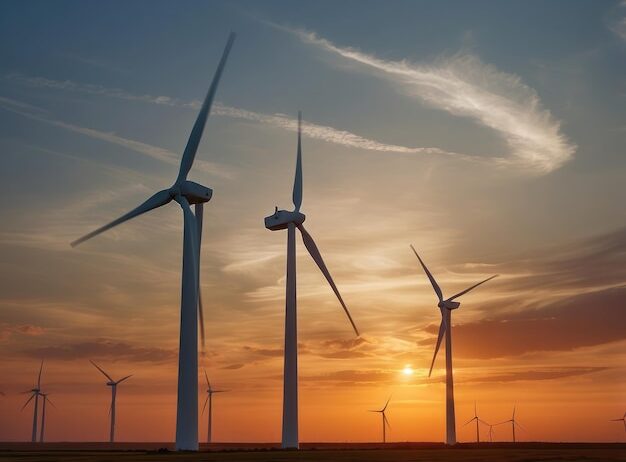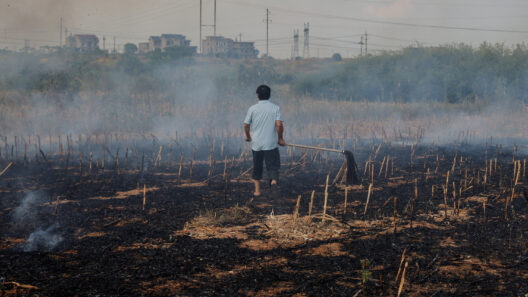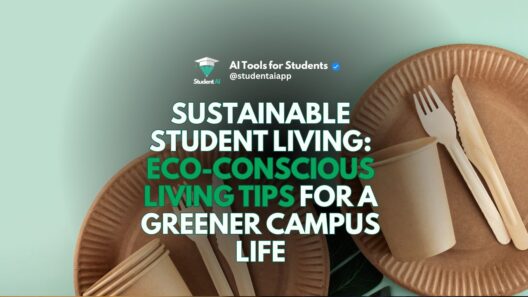Wind energy stands as one of the most captivating symbols of humanity’s attempt to merge technological advancement with environmental stewardship. It is a testament to our evolving relationship with nature. As we harness the invisible currents that dance in the atmosphere, we engage in a profound dialogue with the very fabric of the universe, a dialogue that ultimately reflects the principles of conservation of matter. This relationship between wind energy and the conservation of matter invites us to explore not only the mechanics of energy production but also the philosophical implications of our choices in harnessing nature’s power.
At the core of the conservation of matter is a fundamental tenet: matter cannot be created or destroyed, only transformed. Wind turbines, ingeniously crafted machines that convert kinetic energy from moving air into electrical energy, epitomize this transformation. When wind spins the blades of these turbines, it does not destroy the wind; instead, it alters energy forms, exemplifying conservation in its most practical application. The wind, a natural phenomenon birthed from solar heating and the Earth’s rotation, is merely transformed into a more useful and highly coveted form—electricity.
The process begins with the harnessing of wind’s innate energy. Wind itself is rich with kinetic energy, its momentum reminiscent of a high-stakes game of chess played out across vast landscapes. Each gust, each gentle breeze hosts potential, ready to unfold into something greater. Wind turbines then serve as the strategic players, deftly capturing this potential while allowing the wind to remain unchanged in its essence. It is the symbiotic relationship encapsulated in conservation principles—no matter is lost; it simply ebbs and flows, a continuous cycle of energy.
The allure of wind energy extends beyond its sustainability. It acts as a beacon for conservationists, those who advocate for the protection of our natural heritage. In a world increasingly threatened by climate change, wind energy stands as a formidable ally. It offers a clean, renewable alternative to fossil fuels, which not only exploit but also deplete the Earth’s resources. By courting the varying gales, we engage in a form of atmospheric conservation. The wind represents a resource that is abundantly available, inexhaustible, and free, embodying the essence of longevity and resilience that is often missing in finite resources.
Consider the ecosystem that surrounds wind energy installations. Farmland and natural habitats coexist harmoniously with wind farms. Birds soar above towering turbines, and farmers can cultivate their fields without compromising the aerodynamic elegance of towering blades. This integrated approach exemplifies a broader conservation ethos, where the act of generating energy does not sever the connection between the land and those who inhabit it. Instead, it enriches the local environment, promoting biodiversity. Through the opportunity to coexist, we reaffirm the idea that human progress and ecological stewardship are not mutually exclusive.
Moreover, the deployment of wind energy cultivates an awareness of our ecological footprint, enhancing societal mindfulness regarding resource consumption. As societies transition towards embracing wind as a primary energy source, there is a significant shift in public consciousness about conservation in remoter aspects of life—from energy use to waste generation. Communities that invest in wind energy are tacitly advocating for a lifestyle that promotes sustainability, nurturing a culture of conservation that extends far beyond energy production alone.
The architecture of wind turbines also merits attention. These structures rise majestically against the backdrop of the sky, their sleek forms echoing nature’s own artistry. This aesthetic simultaneously serves a functional purpose, embodying a harmonious blend of design and engineering. They stand as sentinels of sustainability, their movements deceptively simple yet brimming with complex interactions of physics and engineering principles. Wind turbines remind us that even the most intricate systems are underpinned by a singular truth: energy transformation is an ever-present, perpetual motion, a mirror reflecting the state of matter itself.
A salient factor in promoting wind energy is its relatively low environmental impact compared to traditional energy sources. The extraction and combustion of fossil fuels disrupt ecosystems, degrade air quality, and contribute significantly to greenhouse gas emissions. In contrast, wind energy offers a cleaner, ecological alternative. The life cycle of wind-generated electricity—from construction to operation to decommissioning—exhibits minimal negative impact on terrestrial and marine ecosystems, further reinforcing the principles of conservation.
However, the journey toward embracing wind energy is not devoid of challenges. As with any endeavor that seeks to alter our interaction with nature, a balance must be struck to avoid unintended consequences. Wind farms require strategic placement, mindful of local wildlife and ecological sensitivities. Rigorous studies and thoughtful planning safeguard against disruptions, ensuring conservation principles are upheld in both energy production and ecological integrity.
In conclusion, the relationship between wind energy and the conservation of matter substantiates a crucial paradigm shift in our energy narrative. By harnessing the power of wind, we engage in a transformative process that reflects not only a technological triumph but also a philosophical commitment to preserving the ecosystems that sustain life. Wind energy challenges us to reimagine our role within the intricate web of nature, shifting from mere exploitation to thoughtful stewardship. As blades gracefully rotate against the horizon, they remind us of our potential to not only coexist with the natural world but to thrive alongside it, pedal to the metal, embracing a future where energy production harmonizes with conservation in a dance as old as the Earth itself.








